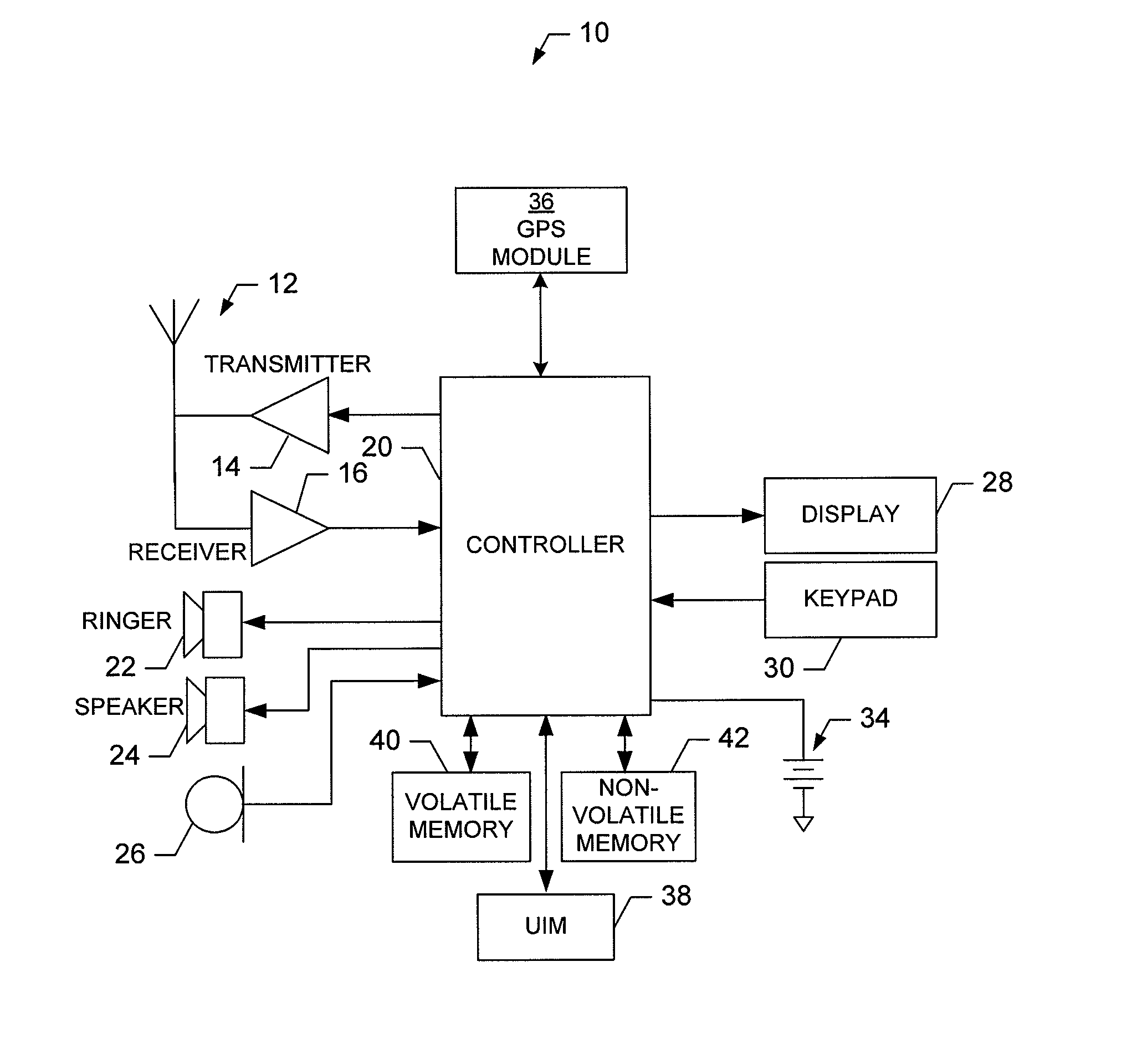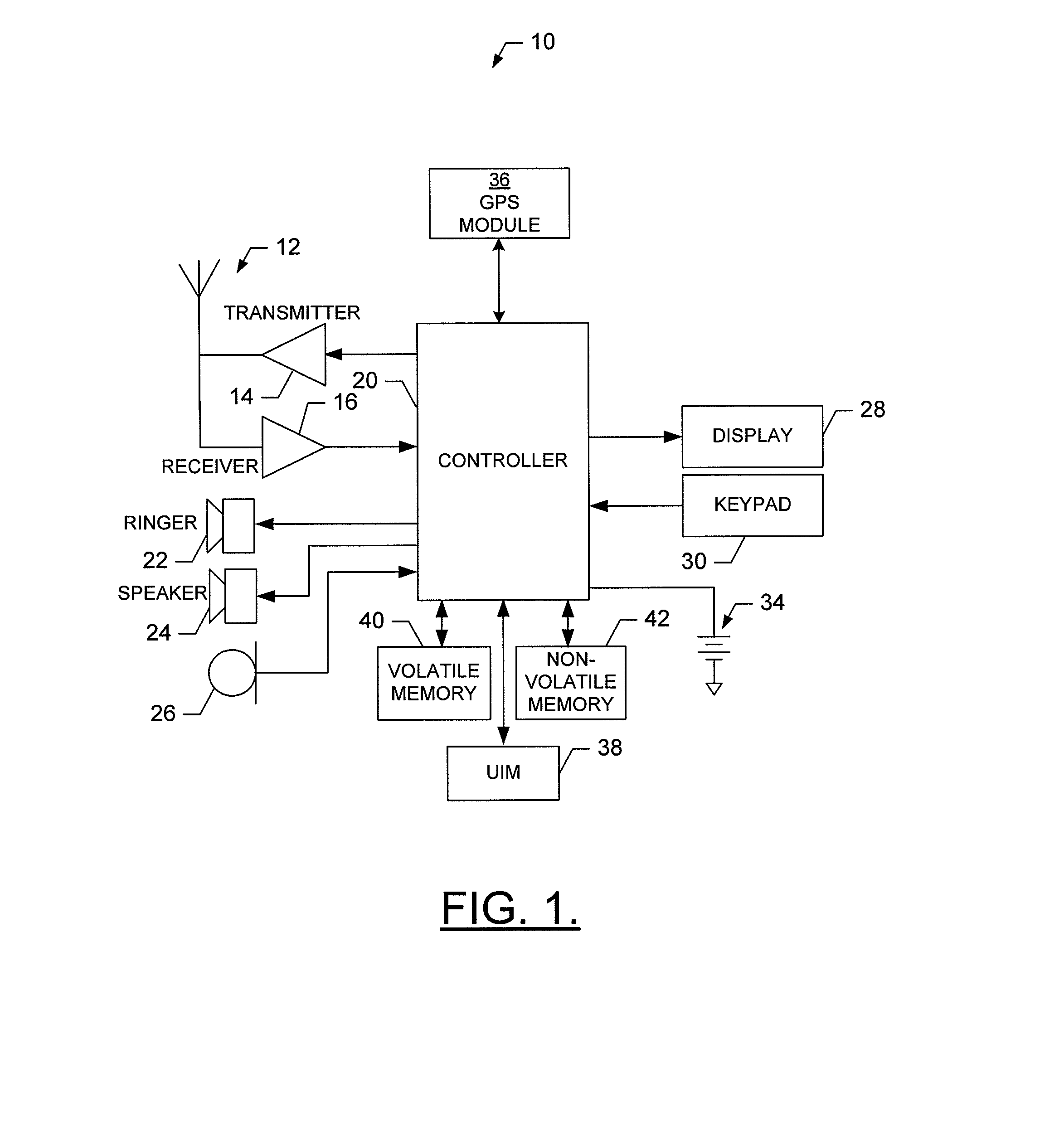Methods, apparatuses, and computer program products for traffic data aggregation using virtual trip lines and a combination of location and time based measurement triggers in GPS-enabled mobile handsets
a technology of traffic data and triggers, which is applied in the field of methods, apparatuses and computer program products for traffic data aggregation using virtual trip lines and a combination of location and time based measurement triggers in gps-enabled mobile handsets. it can solve the problems of compromising the privacy of the driver, requiring a sophisticated fixed infrastructure, and expensive loop detectors used to detect traffic conditions. , to achieve the effect of preserving user/subscriber privacy, enhancing
- Summary
- Abstract
- Description
- Claims
- Application Information
AI Technical Summary
Benefits of technology
Problems solved by technology
Method used
Image
Examples
Embodiment Construction
[0025]The present invention now will be described more fully hereinafter with reference to the accompanying drawings, in which some, but not all embodiments of the inventions are shown. Indeed, these inventions may be embodied in many different forms and should not be construed as limited to the embodiments set forth herein; rather, these embodiments are provided so that this disclosure will satisfy applicable legal requirements. Like numbers refer to like elements throughout.
[0026]FIG. 1 illustrates a block diagram of a mobile terminal 10 that would benefit from the present invention. It should be understood, however, that a mobile telephone as illustrated and hereinafter described is merely illustrative of one type of mobile terminal that would benefit from the present invention and, therefore, should not be taken to limit the scope of the present invention. While several embodiments of the mobile terminal 10 are illustrated and will be hereinafter described for purposes of exampl...
PUM
 Login to View More
Login to View More Abstract
Description
Claims
Application Information
 Login to View More
Login to View More - R&D
- Intellectual Property
- Life Sciences
- Materials
- Tech Scout
- Unparalleled Data Quality
- Higher Quality Content
- 60% Fewer Hallucinations
Browse by: Latest US Patents, China's latest patents, Technical Efficacy Thesaurus, Application Domain, Technology Topic, Popular Technical Reports.
© 2025 PatSnap. All rights reserved.Legal|Privacy policy|Modern Slavery Act Transparency Statement|Sitemap|About US| Contact US: help@patsnap.com



